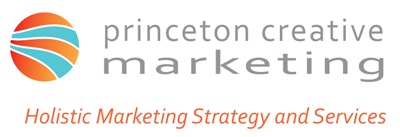You know how important the quality of your product or service is to your customer. Your customers judge their experience of your business through the product or service they receive from you. But there are many other indirect and subtle ways in which customers interact with a business. Businesses can foster positive impressions from their target markets through applying smart branding strategies.
Successful and cohesive branding can tell your audience immediately who you are and how you want to be perceived. For example, do you want your audience to see you as a cutting-edge innovator or as experienced and reliable?
One critical aspect of successful brand messaging is consistency. You want your target audience to readily recognize you based on a logo or tagline or certaincolor combinations. The audience associates an impression or feeling based on your branding. If your message is not consistent, your audience will keep changing what they think and feel about you. You may be perceived as confused or even dishonest and lose your audience.
So how do you create successful and cohesive branding? It all starts with some essential components:
- Name – The name of your business can, of course, have a strong influence on impressions. You want your business name to reflect your uniqueness and value. This is likely the first brand asset that you created for your business.
- Logo – A great logo can be a powerful asset for fostering brand recognition. Once you have a great logo, you can place it everywhere. You want to make sure you have several versions and formats of your logo available for different uses: color, black and white, on a white background, on a black background, JPEG, PNG, EPS. It is also helpful to have a printed reference sheet to show how the logos should look.
- Color Scheme – In addition to your logo, you can use consistent colors in your materials to help support or reinforce the look and feel of your brand. Make sure to select colors that complement and do not clash with your logo colors. Once you have determined a color scheme, use it on your website and on printed items such as postcards, newsletters, business cards, etc. Again, you will want to be consistent in using your chosen color scheme to help strengthen your brand message. Make sure you know the exact values of all the colors you are using in both RGB and CMYK models. (If you are not familiar with RGB and CMYK color models, speak with a designer or someone who can explain this or obtain the correct color values for you.)
- Font – The consistent use of chosen or specified fonts helps reinforce your branding message. Fonts and typefaces can actually have a significant impact on how customers relate to and perceive your brand. Make sure you utilize font faces on your website that are easy to read online and align with the impression you want communicate about your brand.
- Usage Guidelines – In case this concept has not been repeated enough, the key to successful branding is consistency! Creating and adhering to a set of Usage Guidelines will help ensure you and your staff are absolutely clear about how to use all the branding assets listed above. Your Guidelines can contain specific instructions on how to use your logo such as where and how often your logo can appear on a page, minimum and maximum size boundaries, etc. You can also create instructions on how colors in your color scheme are to be used, how text should be formatted for different uses (e.g., bold, underline and color for headlines), and include formatting templates for standard documents.
- Photos – Sometimes a picture really is worth a thousand words so make sure you have a good digital photo library that can help support the story you want to tell. Make sure you have different available formats too. For example, high res for print, low res for web, color versions, black and white, and different sizes. But please make sure your photos are good quality, preferably taken by a professional photographer. And, once again, it is important that the quality of all your photos is consistent. The one terrible and blurry photo among a dozen great ones will stand out in the customer’s mind!
- Boilerplate –This is the short blurb or key message you want to communicate about your brand. This should be similar or identical to your short-form value proposition and every employee should be familiar with it. Keep your boilerplate statement in a Word or text file so it is ready to send instantly to anyone (e.g., designers, media) who might need a quick description of your brand. Don’t leave it to an outsider to create this statement for you!
- Digital Document Library – Keep a digital library of all your printed materials including newsletters, white papers, articles, marketing collateral. It is always a good practice to keep all your materials organized in an easily searchable and retrievable format.
The proper – and consistent – use of brand messaging is essential to establishing your business identity and differentiating you from your competitors. Good branding strategies help your customers take the guesswork out of figuring out who you are and what unique value you offer.
Creating your branding strategy and setting up the key branding assets listed above can seem a complex task. A designer or marketing expert can help guide you through some of the initial setup. But once your assets have been established and organized, it is up to you and your business to regularly apply these strategies to clearly communicate who you are.
